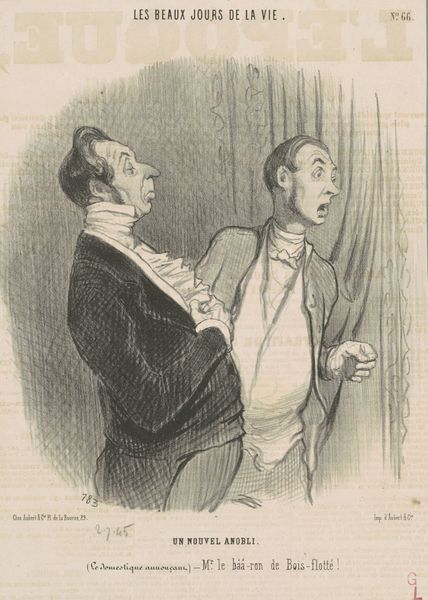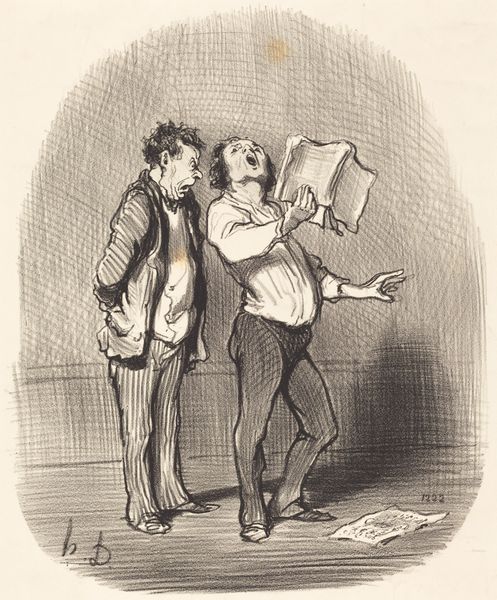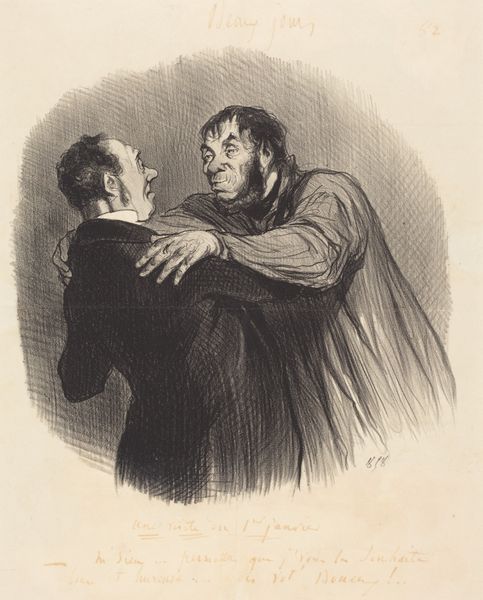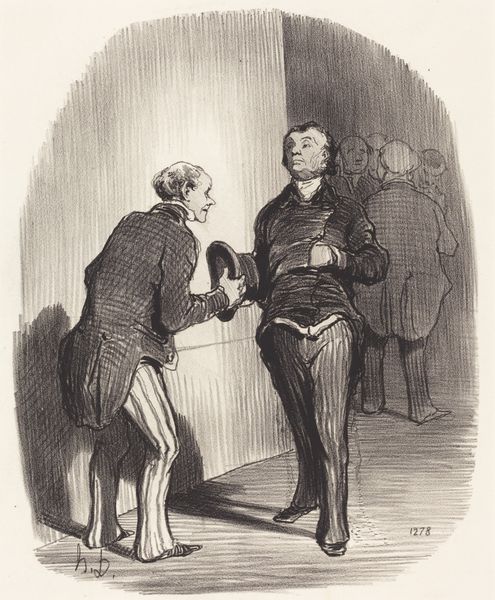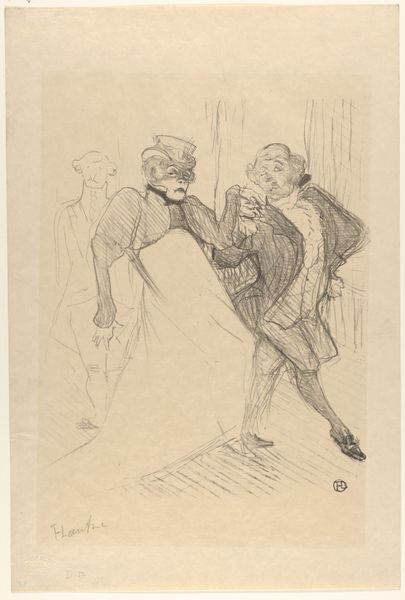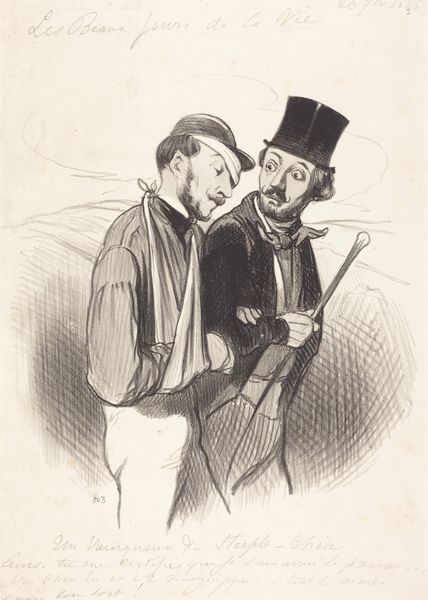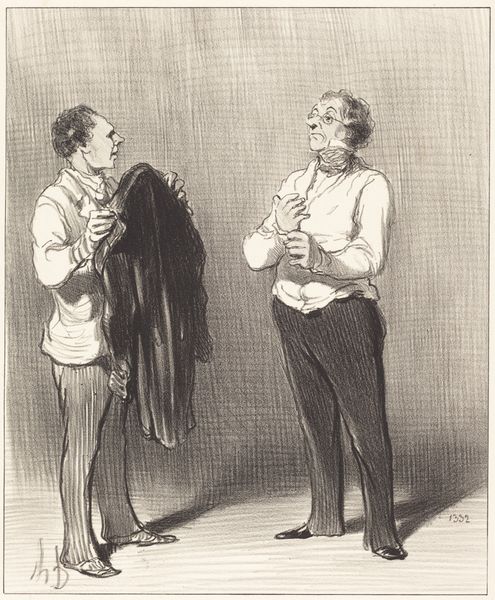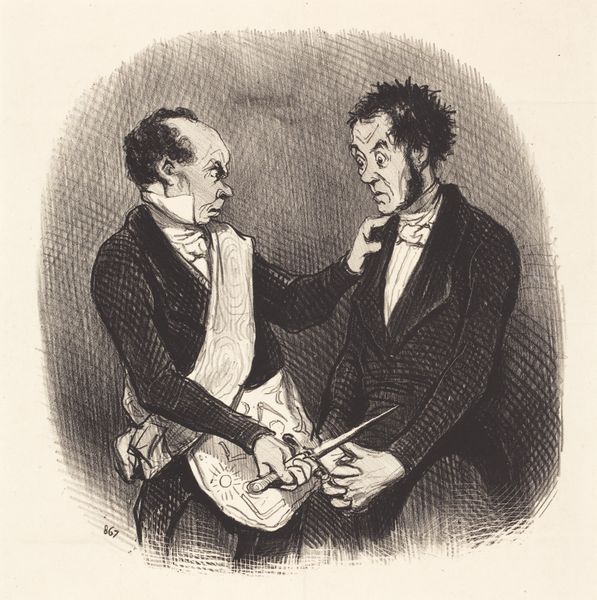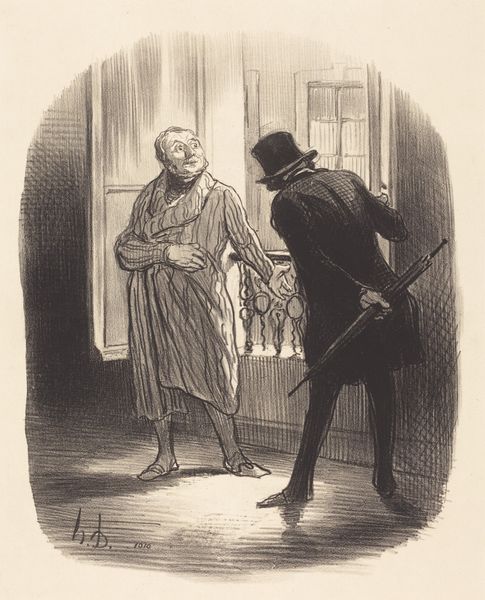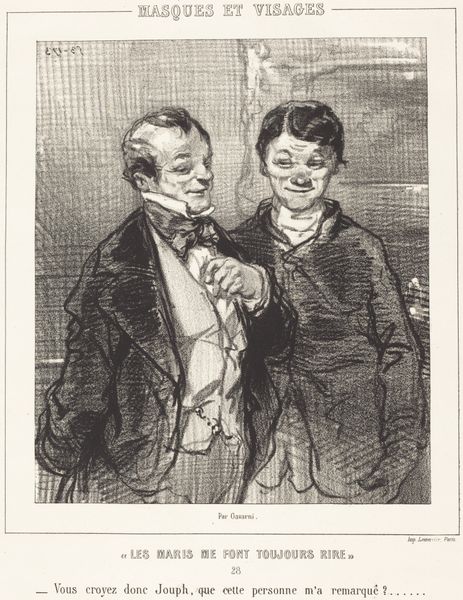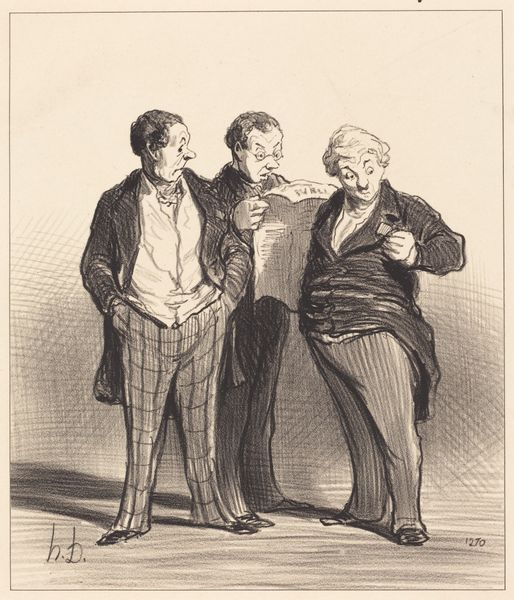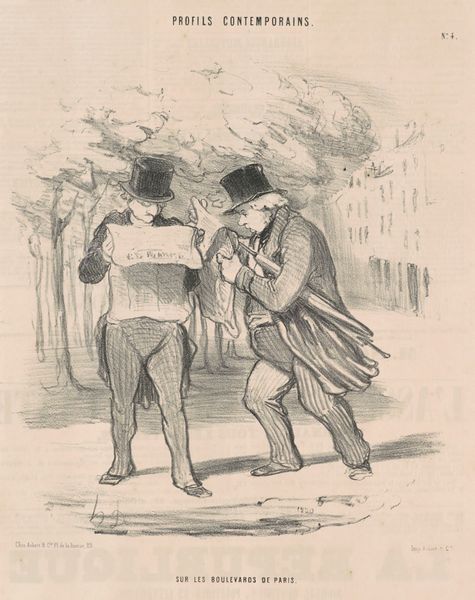
lithograph, print
#
16_19th-century
#
lithograph
# print
#
caricature
#
figuration
#
genre-painting
#
realism
Copyright: National Gallery of Art: CC0 1.0
Curator: Today we are looking at Honoré Daumier's lithograph "Un Habit a la Mode", created in 1845. It’s a print that feels both intimate and observational. Editor: My first impression is that this piece has a strong satirical edge. The exaggerated features of the figures, particularly the gentleman staring directly out, seem designed to mock their pretentiousness. There is something about the harsh contrast between the hatched shading and bare paper, maybe, that contributes to the impression of being caught under a harsh, unforgiving spotlight. Curator: Daumier was indeed a master of social critique, particularly in his prints. This lithograph, made with a greasy crayon on limestone and then printed, was made during a period of significant industrial and social change. Daumier regularly critiqued the rising bourgeoisie and its values through this readily accessible medium. Consider how the lines create a texture which emphasizes the materiality of their coats – a deliberate commentary on the obsession with outward appearances? Editor: Absolutely. Clothes as signifiers are front and center. The way the figure on the right wears his coat, hands clasped tightly behind him, immediately recalls a puffed-up sense of self-importance. Daumier is leveraging recognizable codes to make his characters instantly legible as social types. The meaning in the material, quite literally, comes through how it is presented! Curator: Daumier’s skill in caricature is evident. While the style falls under Realism, observe the exaggeration, how specific traits are heightened to convey deeper meaning about the figure's character and status. It pushes past mere representation. These choices in style offer cultural clues on social norms, appearances and economic concerns in Paris at this time. Editor: I find myself focusing on the gaze of the right figure. It's knowing, slightly condescending, as though he’s acutely aware of the viewer scrutinizing him. His eyes become a focal point. It's a gaze that feels very loaded with class anxieties. It speaks volumes about the performance of identity. Curator: These kinds of affordable prints disseminated his commentary widely. As the art historian TJ Clark argues, Daumier tapped into the raw and urgent conditions of nineteenth-century urban life through these popular works. It's powerful how a simple lithographic print could function as a form of mass communication. Editor: Indeed, the artwork holds more than a study of men and garments. It’s a snapshot of society rendered in symbolism and suggestive materials, reflecting on identity. It allows you to think about class tensions that simmered under the surface of the bourgeois portraiture. Curator: So we see how the piece serves as an example of production meeting meaning! Thank you for providing those iconographic and cultural touchstones to think about more critically! Editor: It was fascinating looking beyond the print and appreciating what's woven into each mark on paper.
Comments
No comments
Be the first to comment and join the conversation on the ultimate creative platform.
